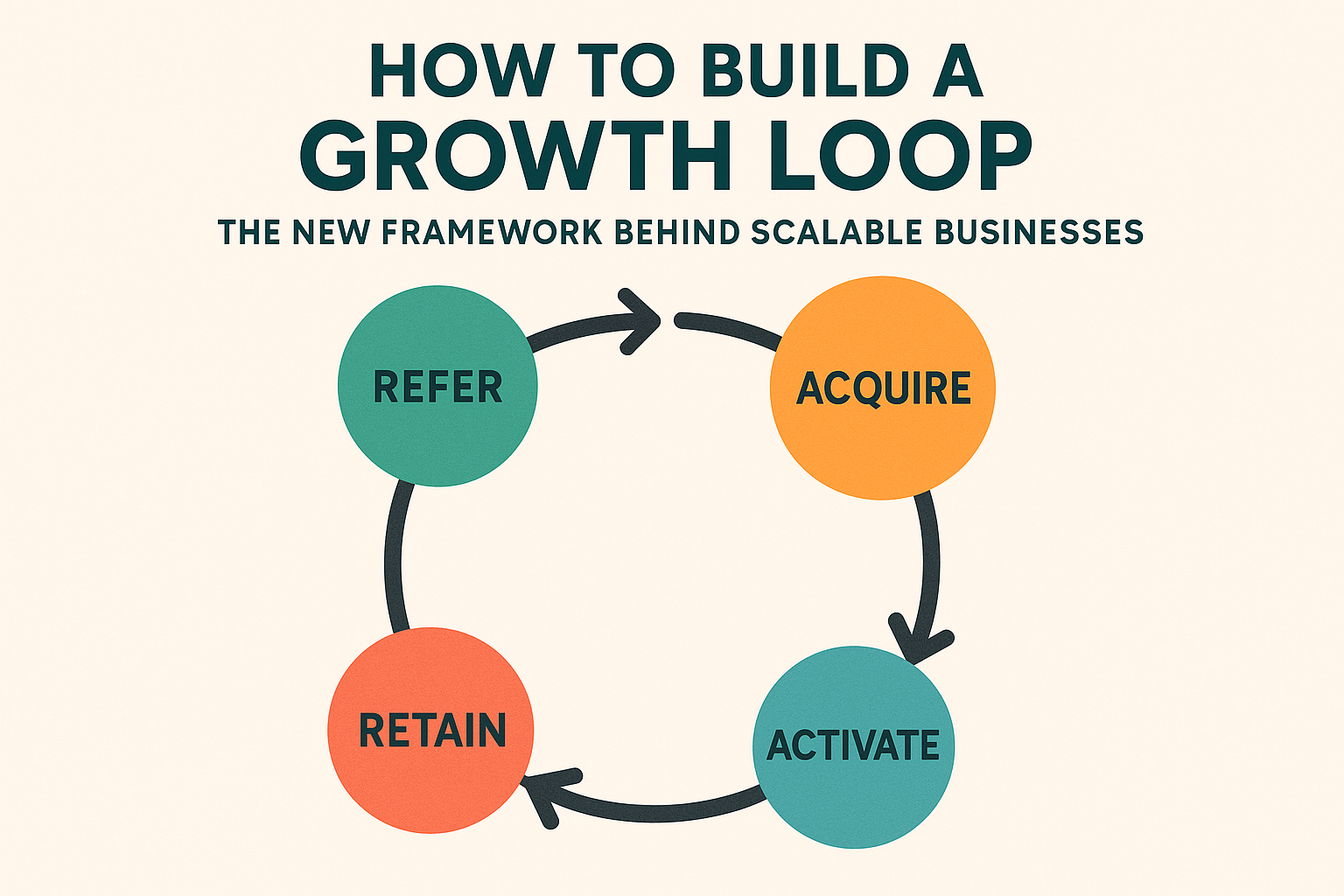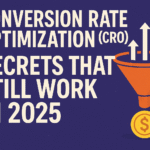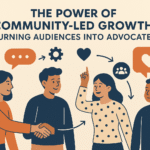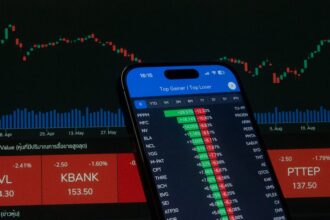For decades, business growth was visualized as a funnel—a wide-top channel where you pour in prospects, nurture them through stages, and hope a few convert at the bottom. But this model is inherently leaky, expensive, and linear. It assumes a finite journey with a clear end. In today’s hyper-competitive digital landscape, a new, more powerful paradigm has emerged from the most successful tech companies: the Growth Loop.
This isn’t just a new marketing tactic; it’s a fundamental shift in business architecture. Instead of a leaky funnel that constantly needs refilling with costly ad spend, a growth loop is a self-reinforcing system where each user’s actions directly fuel the acquisition of the next. It’s the engine behind the viral expansion of products like Dropbox, the relentless marketplace dynamics of Airbnb, and the content ecosystems of YouTube.
This comprehensive guide will deconstruct the growth loop framework. You will learn what it is, why it has supplanted the funnel as the model for scalable, capital-efficient growth, and most importantly, how to build a growth loop tailored to your own business.
Why the Funnel is Failing and the Loop is Winning
The traditional marketing funnel (Awareness > Consideration > Conversion > Loyalty) is not obsolete, but it is incomplete. Its primary flaws are:
- It’s One-Way and Finite: A customer reaches the “Loyalty” stage, and the model stops. It doesn’t account for what happens next. A loyal customer is seen as an endpoint, not a new channel.
- It’s Extraction-Focused: The goal is to extract value from the customer (a sale). It doesn’t inherently encourage or systematize how the customer can create new value for the business.
- It Requires Constant Fuel: Top-of-funnel awareness is often a cost center, reliant on continuous investment in ads, content, or other paid channels. When you turn off the spend, the growth stops.
A growth loop framework solves these problems by creating a closed system. The output of one cycle becomes the input for the next. This creates compounding growth, where the cost to acquire a customer (CAC) decreases over time as the system gains momentum.
The most iconic example is the referral loop. Dropbox didn’t just advertise cloud storage; it built a system where using the product (storing files) created a natural incentive to invite others (get more free space). Those new users then started the cycle again. Each cycle of the loop added more users, which created more sharing, which attracted more users—a perfect, self-perpetuating growth machine.
Deconstructing the Growth Loop: The Three Core Components
Every effective growth loop, regardless of type, consists of three fundamental stages that form a continuous cycle. Understanding these is key to learning how to build a growth loop.
1. The Input: How New Users Enter the System
This is the trigger that brings a new user into your product or ecosystem. In a funnel model, this is almost always a paid ad or a marketing campaign. In a loop, the input is often created by the actions of existing users. Common inputs include:
- Invitations and referrals from existing users.
- User-generated content that ranks on search engines or spreads on social media.
- Publicly shared outputs (e.g., a Canva design, a Figma prototype, a Spotify playlist).
- Network effects that make the product more valuable as more people use it.
2. The Action: The Core Value Unit and User Behavior
This is the key action a user takes that delivers value and sets the stage for the next cycle. This action is often called the “core product value” or the “unit of exchange.”
- For Dropbox, it’s storing/sharing a file.
- For Airbnb, it’s booking a stay (for a guest) or hosting a traveler (for a host).
- For LinkedIn, it’s completing a profile or making a connection.
- For a content platform, it’s consuming a video or writing a post.
This action must be designed to naturally lead to the third stage.
3. The Output: The Byproduct that Fuels New Inputs
This is the magical part. The action must create a tangible output that can be shared outside the product, acting as a magnet for new users.
- The output of sharing a file on Dropbox is a shareable link sent via email.
- The output of booking a stay on Airbnb is a review that builds trust for the next guest.
- The output of creating a design in Canva is an image that can be posted on social media.
- The output of watching a video on YouTube is a watch history that improves the algorithm, recommending the video to others.
This output is then measured and analyzed. How effective was it at driving new inputs? The data from this analysis is used to tighten the loop, improve the process, and increase the velocity of the cycle.
The Major Types of Growth Loops (With Real-World Examples)
Not all loops are created equal. Most scalable businesses rely on one or more of these primary loop types.
1. The Referral Loop
This is the most straightforward loop. Users invite others directly, often incentivized by rewards for both parties.
- Case Study: PayPal. PayPal’s infamous growth hack involved paying users $10 to sign up and $10 for each friend they referred. This created a massive, incentivized viral loop that helped them dominate the eBay payments ecosystem. The input was an email invitation. The action was sending/receiving money. The output was the incentive to invite more people to unlock the system’s full value.
2. The Content Loop
Users create content that attracts new users, who in turn create more content. This is the engine of all social media and content platforms.
- Case Study: YouTube. A creator uploads a video (Action). The video is optimized by YouTube’s algorithm and shared across the platform (Output). A new user finds the video via search or recommendation (Input). The new user may then like, comment, subscribe, or even become a creator themselves, starting the loop again. The output (content) is the input (discovery) for the next cycle.
3. The Product-Led Growth Loop
The product itself is the primary driver of acquisition, conversion, and expansion. This is common with freemium SaaS models.
- Case Study: Figma. A designer uses Figma’s free tier to create a prototype (Action). They share a live link with a client or collaborator who does not have a Figma account (Output). The collaborator clicks the link, views the design, and experiences the product’s value firsthand (Input). To fully interact or create their own designs, they are prompted to sign up for free, becoming a new user and potentially a future payer. The product is the marketing channel.
4. The Marketplace Loop
This is a two-sided loop where growth on one side fuels growth on the other, creating a powerful network effect.
- Case Study: Airbnb. More guests booking stays (Action) lead to more revenue for hosts, which incentivizes more people to list their properties (Output). More listings (Input) create a wider variety and better pricing for guests, which attracts more guests (back to Action). This creates a virtuous cycle where the value of the marketplace compounds for everyone involved. Breaking into this loop is difficult, but once established, it creates a immense moat for the business.
How to Build a Growth Loop: A Step-by-Step Framework
Building a growth loop is a systematic process of identification, design, implementation, and measurement.
Step 1: Identify Your Core Value and Key Action
Before you can build a loop, you must know what your product does. Answer this: What is the one key action a user takes that delivers the core value of your product? (e.g., “create a document,” “book a ride,” “post a photo”). This action must be:
- Aligned with Value: It must directly provide user value.
- Repeatable: Users should want to do it often.
- Measurable: You must be able to track it easily.
Step 2: Map the Natural Outputs of That Action
Ask yourself: What does a user create or do when they complete this key action that can be seen by non-users?
- Do they create a shareable link? (Google Docs)
- Do they generate data that improves a recommendation algorithm? (Netflix)
- Do they create a public profile? (LinkedIn)
- Do they leave a rating or review? (Yelp)
This output is your potential growth lever.
Step 3: Design the Path from Output to New Input
This is the crucial design phase. How do you turn that output into a seamless, almost automatic input for a new user?
- If the output is a shareable link, does the landing page for new users clearly show the value and have a frictionless sign-up?
- If the output is user-generated content, is it optimized for SEO and social sharing?
- If the output is a review, is it displayed prominently to build trust with prospects?
Reduce the friction between the output and the new input as much as possible.
Step 4: Instrument, Measure, and Optimize the Loop
A loop is a system, and systems must be measured. You need to track:
- Loop Volume: How many cycles are happening?
- Cycle Time: How long does one full cycle take? (Faster is better).
- Conversion Rate: At each stage of the loop, what percentage of users move forward?
- Power Law: Which users (e.g., top content creators, super referrers) are driving the most cycles? Focus on empowering them.
Use tools like Amplitude, Mixpanel, or Heap to track these metrics religiously. Your goal is to tighten the loop, increase its velocity, and improve its conversion rates through continuous experimentation.
The Role of Paid Acquisition in a Loop-Based World
Does building growth loops mean you should stop all paid advertising? Absolutely not. The smartest companies use paid acquisition to jump-start or amplify their natural loops.
- Jump-starting: In the early days, a paid campaign can be used to inject an initial set of users into the system to get the loops turning. For example, you might use targeted ads to acquire your first 1,000 content creators to ensure there’s content for new consumers to find.
- Amplifying: Once a loop is working, you can use paid spend to accelerate it. For instance, you can use paid social ads to boost a user’s high-performing organic post, amplifying the output to drive even more inputs.
The key difference is that paid spend is no longer the only engine; it’s a catalyst for a more powerful organic engine.
Moving from Linear Growth to Compounding Growth
The shift from funnel to loop is a shift in mindset from linear growth to compounding growth. It moves marketing from a department that spends money to acquire customers to a core business function that builds systems that acquire customers automatically.
Building a successful growth loop requires deep product integration, a relentless focus on user value, and a commitment to data-driven experimentation. It’s not a quick fix, but a long-term strategy for building a truly defensible and scalable business.
The most resilient companies of the next decade will not be those with the biggest marketing budgets, but those with the smartest, fastest, and most value-driven growth loops. Your task is to find yours.
Call to Action: Audit your current user journey today. Map out the key actions your users take and ask: “What does this action create that could naturally attract the next user?” You might just find the seed of your own growth loop hiding in plain sight.
FAQ Section: How to Build a Growth Loop
1. What’s the main difference between a growth loop and a viral loop?
While often used interchangeably, there’s a subtle distinction. A viral loop is a specific type of growth loop focused purely on person-to-person invitation and referral mechanisms (e.g., inviting friends to a social app). A growth loop is a broader term encompassing any self-reinforcing cycle, including content loops, marketplace loops, and paid loops where the output fuels cheaper future acquisition. All viral loops are growth loops, but not all growth loops are purely viral.
2. Can service-based businesses or e-commerce stores use growth loops?
Absolutely. While common in software, the framework is applicable anywhere. An e-commerce store could create a review loop: A customer buys a product (action), leaves a verified review (output), which builds social proof and convinces a new shopper to buy (input). A service business could implement a referral program where a satisfied client’s testimonial (output) is used in a case study to attract new clients (input).
3. How long does it typically take to see results from a growth loop?
Growth loops are designed for long-term, compounding growth, not immediate spikes. Initially, results may be slow as you optimize the cycle time and conversion rates. The power comes from the compounding effect over months and years. The goal is to create an asset—a growth engine—that becomes more valuable and efficient over time.
4. What is the single biggest mistake companies make when trying to build a growth loop?
The biggest mistake is focusing on the “growth” part before the “value” part. If the core action doesn’t deliver significant value to the user, no one will take it, and there will be no output to share. You cannot incentivize your way out of a bad product. The loop must be built on a foundation of genuine utility.
5. How do I measure the success and health of my growth loop?
Track three key metrics:
- Loop Coefficient: Roughly, the average number of new users an existing user brings in. A coefficient greater than 1.0 indicates viral, exponential growth.
- Cycle Time: The time it takes for one complete cycle of the loop (from input to output to new input). Shorter cycles compound faster.
- Carry Rate: The percentage of users who complete the key action that triggers the loop. This measures how well your product delivers value.








